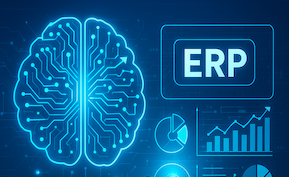Application Development
IT Management
Accelerate Revenue with 4 Game-Changing IT Solution Updates

There is a truism that every organization today is an IT organization. New waves of software and technology have changed business operations in ways we have never seen before. But with innovation comes complexity, spawned by an IT convergence which ultimately slows down data interchange and time to revenue. Effective usage of these technologies will require them to have out-of-the-box integration capabilities at every end. Simultaneously, a future integration strategy should accommodate usability enhancements and innovative ways to use technologies to your advantage.
In the coming years, these 4 game-changing upgrades will be required in the integration strategy to transform business operations and accelerate time to revenue.
AI-enabled Data Transformation Mapping
Artificial intelligence and machine learning will significantly augment data transformation. Every day, organizations generate gigabytes of data in structured and unstructured formats. After gathering this data, users spend a huge amount of time validating and making use of it. However, AI has a better answer to this problem and it is going to radically simplify data transformation.
AI led transformation will help business users process data in more meaningful and agile ways. It will enable advanced level data mapping and data management capabilities. By using our live feeds, search results and traffic predictions, it will suggest recommendations based on what mapping we’ll do next. With this unique advantage, enterprises can bring live data from partners. This will be a great advantage for insurance, manufacturing and health care organizations which deal with a colossal amount of data while executing business transactions.
Self-service Consumption of APIs
Excessive use of APIs leads to overspending. Luckily, Self-service will provide better approaches to API consumption. A single-point for API consumption will significantly simplify the API life cycle management journey. It will help in knowing which user is using an API, how many times it was called, its usage pattern and how transactions were entered. This will significantly reduce the time involved in API partner onboarding and management, from several months to a few minutes. Self-service consumption of APIs will foster quick and simple API interaction at all levels. As you can see, it is an emerging API best practice.
Multi-gigabyte XML and Non-XML Files Processing
Modern day technologies use the XML standard to store data, create information formats and share structured electronic data. However, many old systems still use Non-XML formats. Because of this, a technical challenge faced by organizations is transforming large amount of XML files into Non-XML files or the other way around. That’s why enterprise applications in the future will badly need the capability to process large amounts of multi-gigabyte XML and Non-XML files. This will help users in processing several large files with data quality and integrity. Users can also open and validate these files in real-time.
Support for Parsing and Integrating Unstructured Data
Managing unstructured data is a rough challenge and it doesn’t allow organizations to meet the requirement of data planning. However, a large amount of enterprise data (i.e., presentations, graphics, email, audio, video, web pages etc.) still resides in unstructured format. This is also a problem because the data doesn’t fit in the relational data model. Modern day applications will need to have continuous support for parsing and integrating unstructured data as per industry best practices. It also should be usable through a single command-line, script or wizard dialogue box, allowing a no-code approach. With this, business users can auto-generate scripts for parsing and integrating unstructured data. Additionally, complex XML structures can be split in seconds as per specified size, element and attribute. Efficient parsing and integration of data will empower enterprises to harness more value out of their data and using it for wide range of business purposes.
IT complexity is increasing simultaneously with the rise in IT consumerization. This complexity in-turn is creating gaps between technologies and leading to ‘Islands of Automation.’ All this must be circumvented if the vision is to make technology available to everyone. Enterprises are figuring out ways for simplifying their IT ecosystem and making it more maneuverable by their employees. Factoring in these game-changing updates to the IT infrastructure will help enterprises eliminate the ‘Islands of Automation,’ and IT complexity. Ultimately, enterprises can transact smoothly with business partners (internally or externally), lower IT costs, become easy to work with and accelerate time to revenue.
Photo courtesy of Pexels user Pixabay






